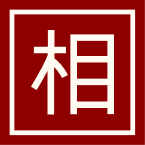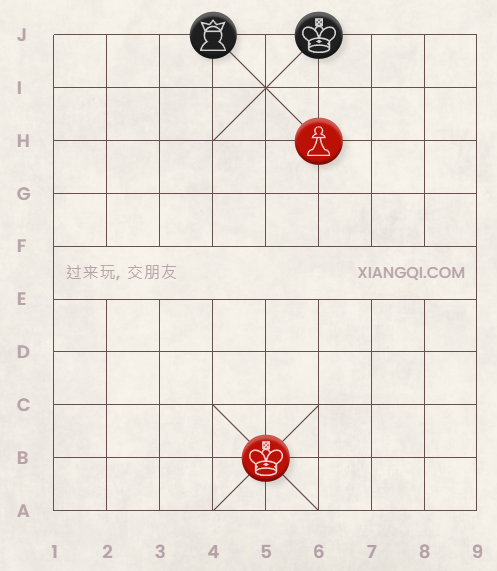10 Most Important Xiangqi (Chinese Chess) Endgame Principles
The endgame stage in Chinese Chess is the stage when there are only a handful of pieces left on the board. Just like the opening and midgame, at the endgame stage, to have the game in your favor, you need to know the principles of Chinese Chess endgame, i.e., "aim for victory when in the upper hand, aim for a draw when in the lower hand". Johnny Chen, a former professional Chinese Chess player of Guangdong Xiangqi team, is going to introduce the 10 most important endgame principles in Chinese Chess for you to improve your endgame.
Author: Johnny Chen (Former Professional Chinese Chess Player, achieved third place in youth team chess in the China National Intellectual Games and second place in the U14 Group of the National Junior Chess Tournament)
1. Have your Cannon back home
As we all know, in Xiangqi, the effectiveness of the cannon depends on the mount. Therefore, as there are only a few pieces left in the Xiangqi endgame stage, players should move the cannon back to their own palace and use the Advisors, Elephants, or even the General to be the mount for the Cannon to attack and defend.
2. Horse is more useful than Cannon when you lack Advisors and Elephants
The strength of the Cannon in the Chinese Chess endgame largely depends on the number of Advisors and Elephants on your side. The Advisors can assist the Cannon to control file 4, 5, and 6, and the Elephants can assist the Cannon to control file 1, 3, 5, 7, and 9. For example, the endgame of “Cannon with two Elephants VS a bare General” is a draw because the Cannon cannot control file 4 and 6. Therefore, the Horse is more useful when some Advisors or Elephants are captured, and the Cannon is slightly more useful than the Horse when both Advisors and Elephants are here.
3. The value of Soldiers is greatly increased in the endgame
The value of the soldier in Xiangqi endgame is much higher than its value in the opening or midgame. In certain situations, it can even be as valuable as the Horse and Cannon. Therefore, in Chinese Chess endgame, you need to pay more attention to protecting your own Soldiers and capturing your opponent's Soldiers.
4. Advance your Soldier carefully
In general, as a Chinese Chess soldier can neither move backward nor promote just like a pawn in Western chess, a soldier on a higher position is considered as having higher potential. Therefore, a high soldier is more valuable than a low soldier, and a low soldier is more valuable than a bottom soldier (as shown in the figure below, high, low and bottom soldiers are soldiers in the area shown respectively).
Nevertheless, it does not mean that a player should always place his/her soldiers at higher ranks, as soldiers usually can directly attack or threaten the enemy's General only when they are at lower ranks, such as the palace center, but a player should be very careful on the timing, point of attack (which file), and coordination between pieces when trying to move the Soldiers from higher ranks to lower ranks.
5. Use the General to control the files
In Xiangqi, due to the “Flying General rule”, the two General cannot face each other on the same file. Because of this rule, in the Chinese Chess endgame, it’s very common for players use their General to restrain the movement of the opponent’s General, as there are fewer pieces on the files to block the General and it is safer to expose the General to assist the offensive in the Xiangqi endgame than in the opening or midgame.
Red moves first. The red soldier cannot directly move forward and attack the black General, so the red player should move B5B6 to use the General to support the Soldier. If black moves J4I5, then red can move H6I6, followed by black’s J6J5. Then red will move B6B5 to pin the black Advisor from escaping. Red soldier must capture the Advisor in the next move and checkmate.
6. Use waiting move
A waiting move is a move which is apparently not that meaningful just by itself, but is intended to force the opponent to make a move, breaking the integrity of the formation of its own pieces and exposing a weak point for you to attack, as players can never skip his/her own round in Xiangqi. In the Chinese Chess endgame phrase, it is a critical technique for beginners.
Red to move. Here, red can make a waiting move of A5B5, as the black General cannot move at all, black must move J4I5. Then the red will move H8J7 to fork the Advisor and General, thus capturing the Advisor.
7. Pieces combination in no Chariot endgame: 1 Horse + 1 Cannon > 2 Horses > 2 Cannons
This is the priority of main pieces combination when both advisors and both elephants are intact, and no chariot is present. Having both the horse and the cannon is the best, because with the piece variety, there are more available tactics to use. Double horses have good ability of short range attack and can form good defense when linked, but they lack the ability to provide long range support, so having double horses is worse than having both the horse and the cannon. Double cannons can form good defense when linked, but they cannot attack well without support from the Chariot, so they are the worst option on the list. When a player encounters the situation of exchanging pieces in the Chinese Chess endgame, he can judge if it is a good exchange by this principle.
8. Pieces combination in endgame with Chariot: 1 Chariot + 1 Horse + 1 Cannon > 1 Chariot + 2 Cannons > 1 Chariot + 2 Horses
The combination of having all the main pieces (Chariot, Horse, Cannon) is the best because of the piece variety concept mentioned above. The combination of having a Chariot with two Cannons has the best mobility and very strong offensive power, so is the second. The combination of having a Chariot with two Horses has weaker mobility compared to the above, so is considered as the worst combination. Interestingly, the combination of double Cannons is the weakest when the Chariot is absent, but it is very powerful when being coordinated with Chariot. You can experience the difference in your Xiangqi endgames.
9. Pieces combination in endgame with full guard: 1 Horse + 1 Cannon > 1 Chariot
As we have discussed in ‘10 Most Important Chinese Chess Midgame Principles’ , in the midgame phrase, having a Chariot is generally more advantageous than having none, and a Chariot is generally considered to be more valuable than a Horse with a Cannon. However, in the Chinese Chess endgame phase, the offensive strength of a single Chariot is minimized because of the lack of coordination, especially when facing the full guard (both Advisors and both Elephants are present and linked). For example, a single Chariot would draw the full guard, while 1 Horse + 1 Cannon can defeat it. Or a single Chariot would draw a Cannon with double Elephants, while 1 Horse + 1 Cannon can win it.
10. Learn the Chinese chess endgame theory
There are many theorized patterns in Xiangqi endgame. Being more familiar with these theories and patterns help to guide the game to your favor, win in an advantageous situation, or resist in the toughest manner when the situation is disadvantageous, and hence get the maximum possibility to win or not getting defeated. Some basic and typical Chinese Chess endgame theories are listed below. For the sake of space, the patterns will not be explained in detail. For players who are interested, you are suggested to study them by yourself, and please follow our subsequent articles for them in the future.
In general (with exceptions), if both sides make the best possible moves, then:
A Soldier which is NOT at the bottom rank beats the bare General
A high Soldier and a low Soldier beat double Advisors
Two Soldiers fail to beat a single Advisor with a single Elephant
Triple high Soldiers beat full guard (i.e two Advisors and two Elephants)
A single Horse beats a single Advisor
A single Horse fails to beat a single Elephant
A single Horse fails to beat a single Soldier
Double Horses beat full guard
A Horse with a Soldier fail to beat full guard
A Horse with a bottom Soldier beats a single Advisor and single Elephant
A Horse with a bottom Soldier beats double Advisors
A Horse with double Soldiers fails to beat full guard with a Horse
A Cannon with an Advisor beats double Advisors
Double Cannons with an Advisor beat full guard
Double Cannons with double Elephants beat full guard
A Cannon with a high Soldier and single-Advisor guard beats full guard
A single Chariot fails to beat full guard
A single Chariot fails to beat A Cannon and double Advisors
Want to practice in the real game?




